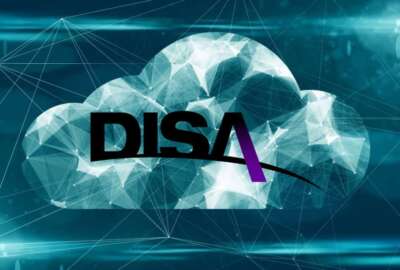

DISA's milCloud 2.0 is about to get a wave of new customers, thanks to a Pentagon mandate to move "fourth estate" applications to the new service.
To listen to On DoD on your phone or mobile device, subscribe on PodcastOne or Apple Podcasts. The best listening experience on desktop can be found using Chrome, Firefox or Safari.
The Defense Department’s top leadership has made clear that it’s a major priority to start moving the military’s applications out of legacy data centers and into enterprisewide cloud environments, including, most recently, by ordering fourth-estate agencies to migrate to milCloud 2.0 within the next two years.
And the Defense Information Systems Agency, which manages the contractor-owned-and-operated service, says it’s already taken several steps to make that transition as easy as possible.
milCloud 2.0 is the follow on to DISA’s original cloud offering, which is operated largely by government personnel. The new version, which first came online in February and is beginning to onboard “early adopters,” includes contract provisions not just for hosting newly-migrated systems, but for assisting with the migrations themselves.
“That includes design and engineering services as well as conducting app rationalization, which is a crucial step for mission partners who are looking for cost savings within their programs.” Caroline Bean, DISA’s program manager for milCloud said in an interview for Federal News Radio’s On DoD. “So we can essentially assist in the packaging and moving of data into milCloud 2.0. We can do as little or as much as the mission partner prefers when it comes to transition support.”
Application rationalization, whether it’s handled under the milCloud contract or other means, will be a key step in Defense agencies’ move to cloud environments. The Defense Department’s chief information officer has ordered those agencies to not just begin preparing their workloads for the cloud, including by virtualizing them, but also to eliminate as many legacy applications as possible in order to reduce “unnecessary migrations.”
“Many mission partners believe that moving to the cloud is the simple lift and shift task, and that that’s all they need to start saving money,” Bean said. “But the key to running an environment in the cloud and ensuring that your environment is running efficiently is essentially to do homework. They should take a look at a good look at their applications and identify if they’re truly cloud ready. That’s definitely a lesson learned that any application owner has learned when they’ve gone to any cloud capability out there.”
To help with that “homework” process, DISA has also created an online calculator (accessible only via military networks) to help Defense organizations calculate exactly what milCloud will cost them once their applications are up and running in the new environment.
“It makes identifying the cost of moving to the cloud very simple, so they can create and save estimates, and when they’re ready to place an order, they can do so straight from their saved estimates,” Bean said. “You would essentially put in all of their infrastructure components that you require , such as your CPU, your memory, and your storage, the number of routable IP addresses that you’ll need, all the technical pieces that are required in order to come up with a cost for what the infrastructure will cost.”
DISA, which has also ordered that all of its own internal applications migrate to milCloud 2.0, says the way in which it bills customers for its services is also changing, compared with the existing milCloud iteration. It uses a pay-per-use model similar to the ones used by commercial cloud providers.
Bean said the rates will be cost-competitive with those same providers, and will be about 70 percent cheaper than the current milCloud.
“Since it’s a commercial service provider that operates and owns the infrastructure, the government is actually able to take advantage of the economies of scale and benefit from the efficiencies that industry has, since they’re running the cloud operations for us,” she said. “The second reason it’s less expensive is because the infrastructure utilizes open source software, which means you don’t have the additional licensing costs required to run the capability. So essentially we’re able to pass those savings onto our mission partners as well.”
Copyright © 2025 Federal News Network. All rights reserved. This website is not intended for users located within the European Economic Area.
Jared Serbu is deputy editor of Federal News Network and reports on the Defense Department’s contracting, legislative, workforce and IT issues.
Follow @jserbuWFED


